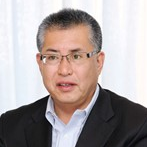Development of Advanced Landfill Methods and Remote Sensing for Landfill Monitoring
A special issue of Environments (ISSN 2076-3298).
Deadline for manuscript submissions: closed (13 August 2021) | Viewed by 16919
Special Issue Editor
Interests: biochemical and mineralogical stabilization of landfilled solid waste; use of waste incineration residue as construction material; mass transportation in a landfill site; development of advanced landfill methods and remote sensing for landfill monitoring
Special Issue Information
Dear Colleagues,
Satellites, airplanes, balloons, and drones, as the main platforms in remote sensing technology, can be used for the construction of landfill sites, landfill daily work management, and the environmental monitoring of landfill sites and the surrounding environment. Recently, with the widespread use of drones, proposals for deploying new methods in landfill management, disaster waste treatment, and efforts to put them into practical use are increasing. By making full use of visible/near-infrared cameras, multispectral imagers, thermal graphic devices, laser scanners, and remote sensors of synthetic aperture radars, it is possible to grasp detailed information from the classification of landfill surface characteristics, surface temperature, plant activity, properties of landfill waste, landfill waste elevation, and landfill waste volume. It is also possible to observe the level of changes by continuously measuring the physical quantity of landfill waste. Another advantage of remote sensing is that historical information for most geographic regions can be obtained. In this Special Issue, we call for papers on practical examples, case studies, and unique utilization methods of remote sensing technology that contribute to the environmentally safe landfill disposal from the construction stage to the completion stage and even after landfill post-closure.
Prof. Dr. Takayuki Shimaoka
Guest Editor
Manuscript Submission Information
Manuscripts should be submitted online at www.mdpi.com by registering and logging in to this website. Once you are registered, click here to go to the submission form. Manuscripts can be submitted until the deadline. All submissions that pass pre-check are peer-reviewed. Accepted papers will be published continuously in the journal (as soon as accepted) and will be listed together on the special issue website. Research articles, review articles as well as short communications are invited. For planned papers, a title and short abstract (about 100 words) can be sent to the Editorial Office for announcement on this website.
Submitted manuscripts should not have been published previously, nor be under consideration for publication elsewhere (except conference proceedings papers). All manuscripts are thoroughly refereed through a single-blind peer-review process. A guide for authors and other relevant information for submission of manuscripts is available on the Instructions for Authors page. Environments is an international peer-reviewed open access monthly journal published by MDPI.
Please visit the Instructions for Authors page before submitting a manuscript. The Article Processing Charge (APC) for publication in this open access journal is 1800 CHF (Swiss Francs). Submitted papers should be well formatted and use good English. Authors may use MDPI's English editing service prior to publication or during author revisions.
Keywords
- construction and management of landfill
- construction and management of liner system for leachate
- landfill work management
- countermeasures against landfill fire
- elevation of landfill and its change
- stabilization of landfill
- impact on the surrounding area of the landfill and the global environment
- management of disaster waste
Benefits of Publishing in a Special Issue
- Ease of navigation: Grouping papers by topic helps scholars navigate broad scope journals more efficiently.
- Greater discoverability: Special Issues support the reach and impact of scientific research. Articles in Special Issues are more discoverable and cited more frequently.
- Expansion of research network: Special Issues facilitate connections among authors, fostering scientific collaborations.
- External promotion: Articles in Special Issues are often promoted through the journal's social media, increasing their visibility.
- e-Book format: Special Issues with more than 10 articles can be published as dedicated e-books, ensuring wide and rapid dissemination.
Further information on MDPI's Special Issue polices can be found here.





